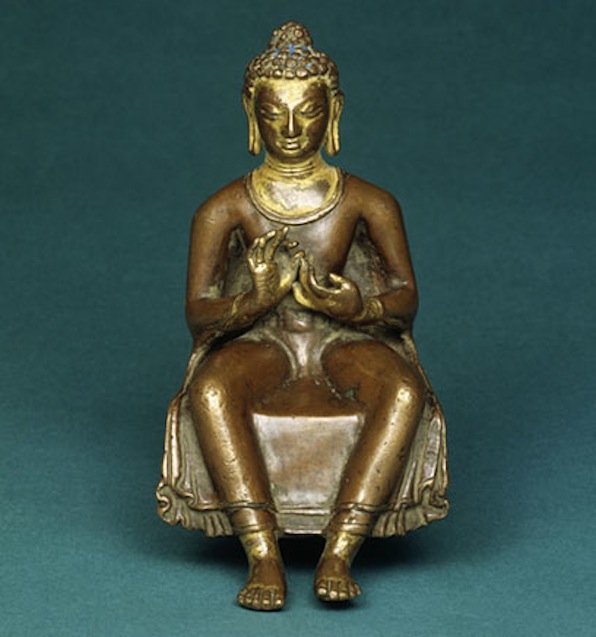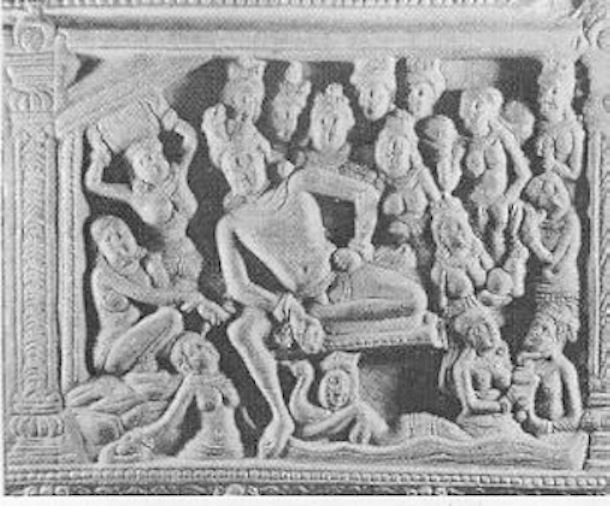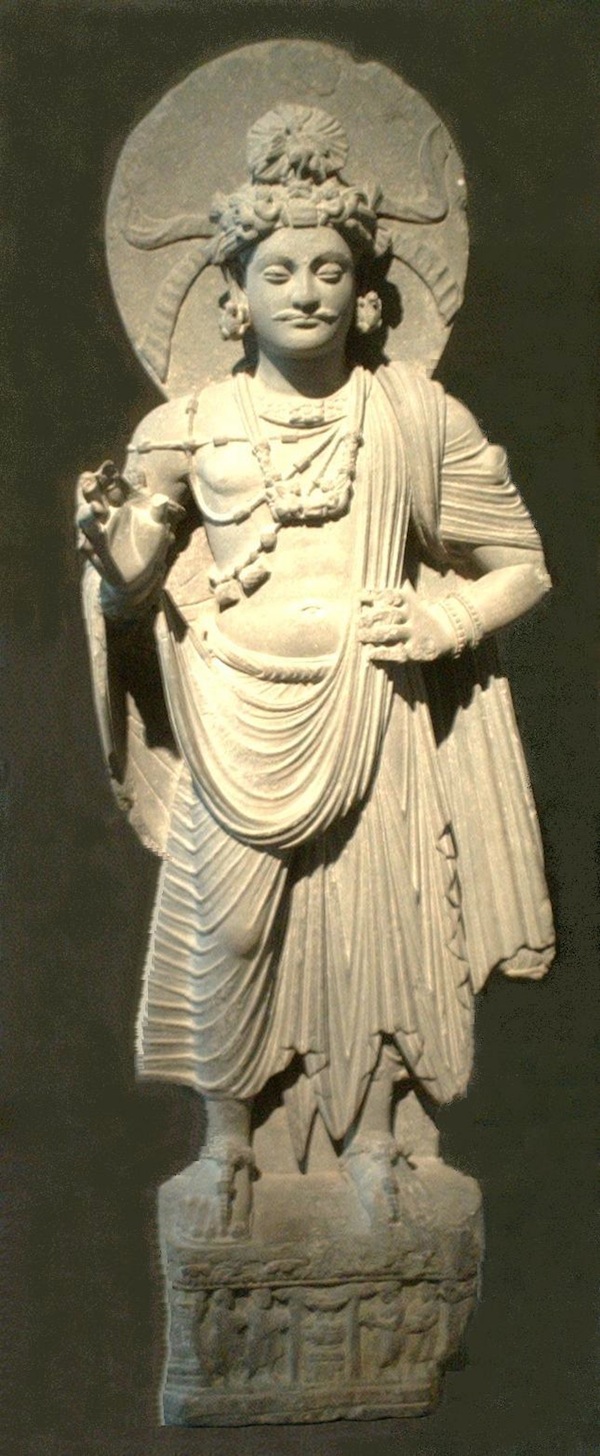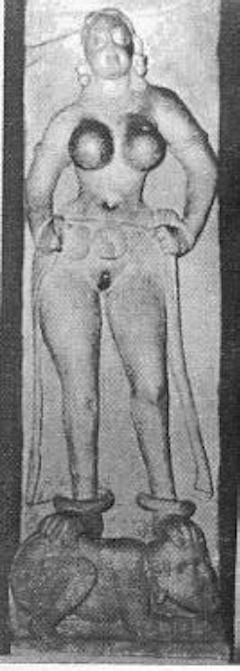Buddha of Baywatch
We often think of Buddha in his monastic phase, when he was "going forth into homelessness," as he called it.

The Preaching Buddha. Nepal, 10th-11th century. Image from link.
There was an earlier phase in Buddha's life, also important, when as Prince Siddhartha he lived the life of a rock star – or Brad Pitt, Hugh Heffner. He was the richest, best-looking, most adored playboy in the country, living in a mansion full of the best-looking, most sexually talented women in the country. His posse of courtesans and wives had the assignment of keeping him entertained and fulfilled so that he would stay focussed on the path toward being a king.

Temple carving of Buddha surrounded by totally hot pleasure girls, who existed only to satisfy his every sexual whim

Buddha when he was young and studly – Prince Siddhartha
The Play of Opposites
Buddha's life demonstrated a full and rich swing between opposites, from the lushness of princely life to the radical and near-suicidal deprivation of his austerities phase.
Later in life, he developed "The Middle Path," which for him was somewhere in-between his radical opposites. The middle he found for himself was quite a bit over on the deprivation side, in that he was homeless and poor.
What is the middle path for you? You will have to inquire and develop your own.
No matter what thoughforms you encounter, even if you read a hundred different versions of a classic Buddhist or Hindu thought such as "women are inferior," or "women can't get enlightened," or "non-monks are inferior," or "anyone other than our particular sect is inferior," there will be totally opposite thoughts, sometimes within the same text, saying, no, there are thousands of female Buddhas. A swami may go on and on endlessly about how everyone should be celibate and sex as a waste, but the thought bubble above his head is, "Except when I do it, because I am so enlightened. And I know a scripture that justifies it."
The illustrations on the temple walls show in luscious detail how beautiful the women were that Siddhartha walked away from – a regular Bay Watch of scantily clad or topless girls, each one a world-class expert in sex. Imagine if Einstein looked like Brad Pitt and then at age 30, after being worshipped as a living god to his heart's content, he walked out into the forest to think about it all. Or think of Buddha as like Hugh Heffner walking out of the Playboy Mansion to live naked on the beach in Malibu. It must have been quite a scene.
Imagine that Manhattan has existed for 2000 years and now has a billion people. The diversity and sophistication is unimaginable. A million kinds of Impossible opposites all getting along. Now think of India and Tibet that way. There is no way you can ever comprehend even 1% of what is going on. It is too vast.

A female figure from a Buddhist temple in Mathura, India. The breasts and pussy of the carving have been darkened by the hands of innumerable pilgrims touching those sacred spots for good luck.
Buddha's 84,000 Techniques
Buddha was a meditation genius, just inventing one technique after the other. He said that he gave 84,000 different techniques for the different kinds of people. (also, take a look at this report, The One Gate to 84,000 Dharmas, from a Buddhist convention). An example of a "nutritional" meditation Buddha gave can be found in the Anapanasati Sutta.Read more ... on this site about Buddha’s techniques.
The Interplay of Opposites
Vedic, yogic, Buddhist and Taoist traditions have all developed exquisite articulations of the interplay of opposites, what in Latin is called coincidentia oppositurum, (or coincidentia oppositorum). Oddly, there is not very much in English on the web about this essential concept.
Link to Wikipedia in German. Link to Wikipedia on Systems theory.
The most elegant symbol of the interplay of opposites, besides sex, is the yin/yang symbol.

The opposites are complementary, not contradictory. Everything in the meditation traditions, every idea, is set against a background that is fantastically lush, contradictory, and varied.
Everyone agrees that Buddha said the following, which has to be one of the most stunning statements in philosophical history: "Do not believe in anything simply because you have heard it. Do not believe in anything simply because it is spoken and rumored by many. Do not believe in anything simply because it is found written in your religious books. Do not believe in anything merely on the authority of your teachers and elders. Do not believe in traditions because they have been handed down for many generations. But after observation and analysis, when you find that anything agrees with reason and is conducive to the good and benefit of one and all, then accept it and live up to it."
There is a sense of free inquiry, and yet at the same time, innumerable rules and regulations have been set down, traditions have been set up, and each promises salvation. Many of my friend who are Buddhists were raised Catholic – and they have the same altars, they just substituted pictures of Buddhist saints instead of Christian ones, the candles are arranged differently, and a different scent of incense is burning. They are still bowing down to dead Asian males.
Go ahead and enjoy the show, but only take unto yourself attitudes and techniques that you know are good for you. You can tell by your own direct experience what is good for you, and never let anyone tell you otherwise.